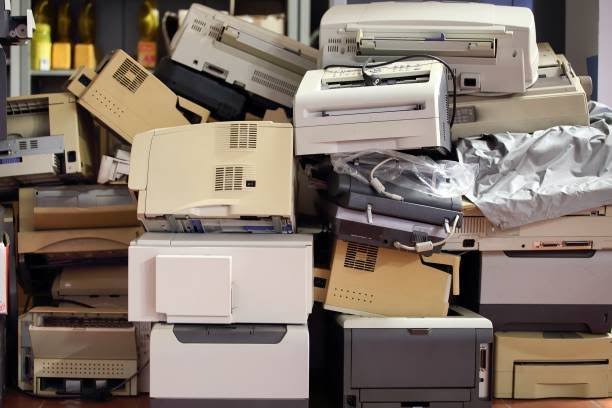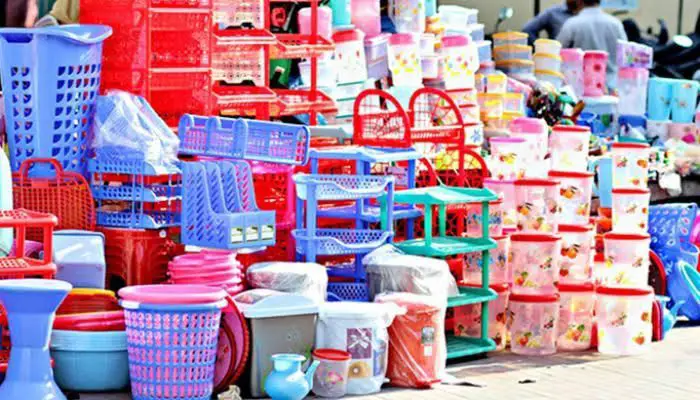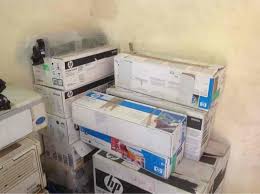Converting wastes into plastic products is a cool idea that makes wastes useful again, instead of throwing away old printer cartridges, they can be recycled and turned into new things. This is good because it helps the environment by reducing waste. When printer cartridges are thrown away, they can end up in landfills, where they take a long time to break down. This is bad for the environment because it can pollute the soil and water.
But when we recycle printer cartridges, we can prevent this pollution. Recycling means taking something old and turning it into something new. So instead of throwing away printer cartridges, we can recycle them and turn them into plastic products. This is good because it saves energy and resources. It takes less energy to recycle printer cartridges than it does to make new ones from scratch.
There are many different plastic products that can be made from recycled printer cartridges. For example, they can be turned into things like plastic bottles, containers, and even toys. This is good because it means we can use less new plastic, which is made from oil. Using less oil is good because it helps reduce air pollution and slows down climate change.
Recycling printer cartridges is also good for the economy. When we recycle printer cartridges, we create jobs for people who collect, sort, and process the cartridges. This is good because it helps stimulate the economy and creates opportunities for people to earn money.
Overall, converting printer cartridges wastes into plastic products is a good idea. It helps protect the environment, saves energy and resources, creates jobs, and reduces pollution. So next time you have old printer cartridges, remember to recycle them instead of throwing them away. It’s good for the planet and for everyone.
Read Also: Practical Steps to Convert Printer Cartridges Wastes into New Printer Cartridges
Types of Recyclable Printer Cartridges Wastes and their Uses

There are different types of recyclable printer cartridges wastes, each with its own uses when converted into new products. Here are some of them:
1. Inkjet Cartridges: Inkjet cartridges are commonly used in home and office printers. When recycled, the plastic components of inkjet cartridges can be melted down and used to make items such as plastic containers, rulers, and other stationary supplies.
2. Toner Cartridges: Toner cartridges are used in laser printers and photocopiers. These cartridges contain plastic as well as toner powder. When recycled, the plastic from toner cartridges can be used to make new plastic products such as pens, storage containers, and even furniture components.
3. Drum Units: Drum units are another component found in laser printers and photocopiers. These units contain various materials, including plastic and metal parts. When recycled, the plastic components of drum units can be repurposed into items such as plastic trays, organizers, and even construction materials for things like decking or fencing.
4. Maintenance Kits: Maintenance kits contain several components used to maintain the printer’s functionality, such as rollers and fusers. When these kits are recycled, the plastic components can be transformed into new plastic products like automotive parts, garden tools, or even playground equipment.
5. Print Heads: Print heads are crucial parts of inkjet printers that dispense ink onto the paper. When recycled, the plastic from print heads can be used to create new plastic items such as mobile phone cases, kitchen utensils, or even medical devices.
Recycling these different types of printer cartridges wastes, we can reduce waste, conserve resources, and create new products, contributing to a more sustainable and environmentally friendly future.
How to Convert Printer Cartridges Wastes into Plastic Products

Converting printer cartridges wastes into plastic products involves several steps:
1. Collection: The first step is to collect used printer cartridges. This can be done through various methods, such as drop-off points at retail stores, collection bins at office buildings, or mail-in programs provided by cartridge manufacturers.
2. Sorting: Once collected, the printer cartridges are sorted based on their type and condition. This ensures that only suitable cartridges are processed for recycling.
3. Disassembly: The cartridges are then disassembled to separate the plastic components from other materials like metal or electronic parts. This can involve breaking down the cartridges manually or using specialized equipment.
4. Cleaning: The plastic components are thoroughly cleaned to remove any remaining ink, toner, or debris. This step is crucial to ensure the quality of the recycled plastic.
5. Shredding: The cleaned plastic components are shredded into small pieces. This increases the surface area of the plastic, making it easier to melt down and process.
6. Melting: The shredded plastic is melted down in high-temperature furnaces or extruders. This molten plastic can then be molded into various shapes using molds or extrusion techniques.
7. Manufacturing: The melted plastic is formed into new products, such as plastic bottles, containers, toys, or other items. Depending on the desired product, additional processing steps like cooling, shaping, or finishing may be required.
8. Quality Control: Throughout the manufacturing process, quality control measures are implemented to ensure that the recycled plastic products meet industry standards and specifications.
9. Distribution: Once the plastic products are manufactured, they are distributed to retailers, wholesalers, or consumers for use.
The Benefits of Converting Printer Cartridges Wastes into Plastic Products
Converting printer cartridges wastes into plastic products offers several benefits:
1. Waste Reduction: Recycling printer cartridges reduces the amount of waste sent to landfills, helping to alleviate the burden on our environment. By giving used cartridges a new purpose, we can extend their lifespan and minimize their negative impact on ecosystems.
2. Resource Conservation: Recycling printer cartridges conserves valuable resources such as plastic, which is derived from non-renewable fossil fuels. By reusing existing plastic materials, we reduce the need for virgin materials and lessen the strain on natural resources.
3. Energy Savings: Recycling printer cartridges consumes less energy than manufacturing new plastic from scratch. The process of melting down and reprocessing plastic requires less energy compared to the production of virgin plastic, resulting in lower greenhouse gas emissions and reduced reliance on fossil fuels.
4. Economic Benefits: Converting printer cartridges wastes into plastic products creates economic opportunities through job creation and revenue generation. Recycling facilities, manufacturing plants, and related industries contribute to local economies by employing workers and supporting businesses in the supply chain.
5. Environmental Protection: Recycling printer cartridges helps to protect the environment by reducing pollution and conserving natural habitats. By preventing the disposal of hazardous materials in landfills, we mitigate the risk of soil and water contamination, safeguarding ecosystems and wildlife.
6. Promotion of Circular Economy: Recycling printer cartridges promotes the principles of a circular economy, where resources are reused, recycled, and regenerated to minimize waste and maximize efficiency. By closing the loop on materials like plastic, we create a more sustainable and resilient system that benefits both people and the planet.
Overall, converting printer cartridges wastes into plastic products is a win-win solution that benefits the environment, conserves resources, supports the economy, and fosters a more sustainable way of living. By embracing recycling and responsible consumption practices, we can make a positive impact on our world for generations to come.
Read Also: Practical Steps to Convert Tires Wastes into Carpet Padding
The Uses and Benefits of Recycled Plastic Products
Recycled plastic products have a wide range of uses and offer numerous benefits:
1. Construction Materials: Recycled plastic can be used to manufacture construction materials such as lumber, decking, and fencing. These products offer durability, resistance to rot and insects, and reduced maintenance requirements compared to traditional wood materials.
2. Packaging: Recycled plastic is commonly used in packaging applications such as bottles, containers, and trays. These products offer lightweight, durable, and versatile packaging solutions that help protect goods during transportation while reducing environmental impact.
3. Consumer Goods: Recycled plastic is used to make a variety of consumer goods such as furniture, kitchenware, toys, and electronics accessories. These products offer affordability, functionality, and aesthetic appeal while reducing the demand for virgin materials.
4. Textiles: Recycled plastic fibers are used in the production of textiles for clothing, upholstery, and carpeting. These products offer performance characteristics such as moisture-wicking, stain resistance, and durability while reducing reliance on natural fibers like cotton or wool.
5. Automotive Parts: Recycled plastic is used in the manufacturing of automotive parts such as bumpers, interior panels, and underbody components. These products offer lightweight, impact-resistant solutions that contribute to fuel efficiency and vehicle performance.
6. Landscaping and Gardening: Recycled plastic is used to make landscaping and gardening products such as mulch, edging, and planters. These products offer longevity, weather resistance, and sustainability compared to traditional materials like wood or metal.
7. Infrastructure: Recycled plastic is used in infrastructure projects such as roadways, bridges, and drainage systems. Products like plastic lumber and composite materials offer durability, corrosion resistance, and reduced maintenance requirements, extending the lifespan of infrastructure assets.
Benefits of Recycled Plastic Products:
1. Resource Conservation: Recycled plastic products reduce the demand for virgin materials, conserving natural resources and reducing environmental impact.
2. Waste Reduction: Recycling plastic diverts material from landfills, reducing pollution and promoting a circular economy where materials are reused and recycled.
3. Energy Savings: Manufacturing recycled plastic products consumes less energy compared to producing new plastic from raw materials, resulting in lower greenhouse gas emissions.
4. Cost Savings: Recycled plastic products can offer cost savings compared to products made from virgin materials, making them an economical choice for consumers and businesses.
5. Environmental Protection: Using recycled plastic products helps mitigate the negative impacts of plastic pollution on ecosystems, wildlife, and human health.
Overall, recycled plastic products offer a sustainable solution to meet a wide range of needs across various industries while promoting environmental stewardship and responsible consumption.
The Challenges of Converting Printer Cartridges Wastes into Plastic Products and their Solutions
Converting printer cartridges wastes into plastic products presents several challenges, along with potential solutions:
1. Contamination: Printer cartridges may contain residual ink, toner, or other contaminants, which can affect the quality of the recycled plastic.
Solution: Implement thorough cleaning processes to remove contaminants before recycling, such as using specialized equipment or solvents.
2. Mixed Materials: Printer cartridges often contain a combination of plastic, metal, and electronic components, which can complicate the recycling process.
Solution: Develop efficient disassembly methods to separate different materials, such as manual sorting or automated disassembly equipment.
3. Complexity of Design: Some printer cartridges have intricate designs or multiple layers, making them difficult to recycle.
Solution: Design cartridges with recyclability in mind, using fewer materials and simpler designs to facilitate disassembly and recycling.
4. Volume and Scale: The volume of printer cartridges wastes generated can be significant, requiring efficient collection, sorting, and processing infrastructure.
Solution: Establish comprehensive collection networks and partnerships with retailers, manufacturers, and recycling facilities to increase recycling rates and scale up operations.
5. Quality Control: Maintaining consistent quality standards for recycled plastic products can be challenging due to variations in feedstock and processing parameters.
Solution: Implement stringent quality control measures throughout the recycling process, such as material testing, process monitoring, and product certification.
6. Market Demand: The demand for recycled plastic products may fluctuate depending on market conditions, consumer preferences, and regulatory requirements.
Solution: Promote awareness and education about the benefits of recycled plastic products to stimulate demand, and collaborate with stakeholders to develop market-driven solutions.
7. Cost Considerations: Recycling printer cartridges wastes into plastic products may incur higher costs compared to producing new plastic from virgin materials.
Solution: Explore innovative technologies and process optimizations to reduce production costs, and incentivize recycling through government grants, subsidies, or tax incentives.
8. Environmental Impact: The recycling process itself may have environmental impacts, such as energy consumption, emissions, and waste generation.
Solution: Continuously improve recycling technologies and practices to minimize environmental footprint, such as using renewable energy sources, optimizing resource efficiency, and implementing closed-loop systems.
By addressing these challenges through innovative solutions, collaboration among stakeholders, and ongoing improvements in technology and processes, the conversion of printer cartridges wastes into plastic products can become more efficient, cost-effective, and environmentally sustainable.
Frequently Asked Questions (FAQs) About How to Convert Printer Cartridges Wastes into Plastic Products
1. Q: What types of printer cartridges can be recycled into plastic products?
A: Various types of printer cartridges, including inkjet cartridges, toner cartridges, drum units, and maintenance kits, can be recycled into plastic products.
2. Q: How can I recycle my used printer cartridges?
A: Many printer manufacturers offer recycling programs where you can return used cartridges for recycling. Additionally, there are third-party recycling companies and drop-off locations where you can recycle printer cartridges.
3. Q: What happens to printer cartridges wastes after they are collected for recycling?
A: After collection, printer cartridges wastes are sorted, disassembled, cleaned, shredded, melted, and molded into new plastic products through a series of recycling processes.
4. Q: Are recycled plastic products of the same quality as products made from virgin plastic?
A: Recycled plastic products can meet the same quality standards as products made from virgin plastic, depending on factors such as the quality of the recycled material, the recycling process used, and product design and manufacturing techniques.
5. Q: Can recycled plastic products be recycled again?
A: Yes, many recycled plastic products can be further recycled or repurposed at the end of their lifespan, contributing to a circular economy where materials are reused and recycled to minimize waste.
6. Q: What are the environmental benefits of converting printer cartridges wastes into plastic products?
A: Converting printer cartridges wastes into plastic products helps reduce waste sent to landfills, conserve natural resources, reduce energy consumption and greenhouse gas emissions, and mitigate the negative impacts of plastic pollution on ecosystems and wildlife.
7. Q: How can I ensure that my recycled printer cartridges are properly processed and converted into plastic products?
A: Look for reputable recycling programs and facilities that follow best practices for recycling printer cartridges and producing recycled plastic products. Check for certifications or partnerships with recognized organizations in the recycling industry.
8. Q: Can individuals or businesses profit from recycling printer cartridges wastes into plastic products?
A: While recycling printer cartridges may not always result in direct financial profit, it can generate economic and environmental benefits, such as cost savings, resource conservation, and environmental stewardship. Additionally, some recycling programs offer incentives or rewards for returning used cartridges.
Read Also: The Appearance and Features of Cats

